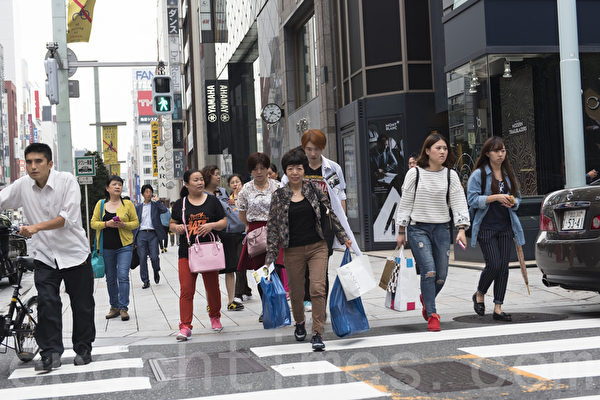China’s continued economic downturn has had a significant impact on outbound travel consumption, with the days of Chinese tourists “crazy shopping” in Japan now long gone. The weakening purchasing power has become a new reality that the Japanese tourism industry must face.
Since the Chinese Communist Party partially lifted its extreme pandemic control policies in 2023, gradually opening up overseas group tours, the number of Chinese visitors to Japan in 2024 was still 27% lower than in 2019. Destinations such as the United States and Europe, which are more expensive long-haul travel options, are no longer the top choices for Chinese travelers. Furthermore, according to data from online travel platforms, while Japan remains one of the preferred destinations for Chinese tourists, there have been notable changes in the overall tourist demographics and spending habits.
Compared to 2019, the depreciation of the Japanese yen attracted more Chinese visitors, resulting in a 43% increase in total tourist spending. However, the average spending per Chinese traveler only grew by 30%, significantly lower than the growth rates of tourists from other countries.
According to reports from the Central News Agency, Koike Satoshi, a researcher at Sompo Japan Insurance, pointed out that this phenomenon is mainly related to the sluggish Chinese economy and the downturn in the real estate market. He stated, “Chinese tourists are no longer showing the ‘crazy shopping’ scenes of the past, with overall purchasing power significantly weakened.”
Faced with the decline in the number of Chinese tourists and their purchasing power, Japanese companies are adopting diversified strategies to adapt to market changes. For example, the retail chain “Don Quijote” has begun to cater to the needs of tourists from different countries and regions by introducing more original products, such as snacks and other specialty items. The company acknowledges that the scenes of Chinese tourists’ “crazy shopping” in the past are difficult to reproduce, and they now focus more on diversified market demands.
In addition, some Japanese airlines and travel service providers are also adjusting their strategies. For instance, All Nippon Airways (ANA) has launched a “free domestic connecting flight for Chinese tourists” campaign to encourage more Chinese travelers to explore other cities in Japan, further diversifying the risk of single-market demand.

